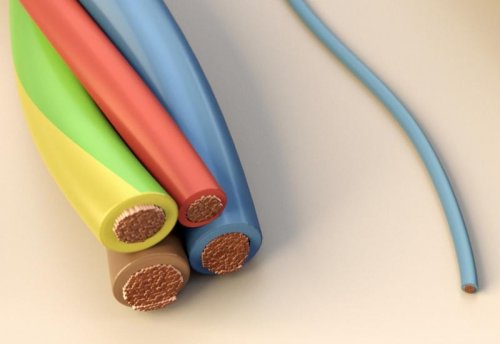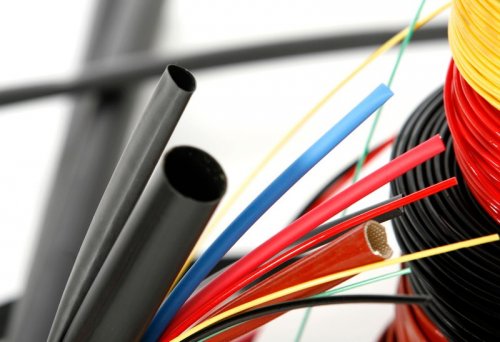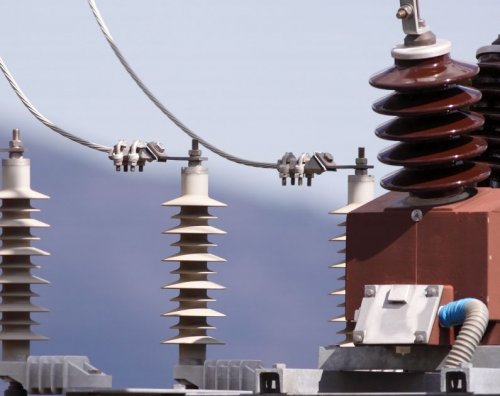Metals and Dielectrics—What are the Differences?
Metals
The valence electrons of a metal are weakly bonded to their atoms. When metal atoms condensing from metal vapors form a liquid or solid metal, the outer electrons are no longer bound to individual atoms and can move freely in the body.
These electrons are responsible for the well-known significant conductivity of metals and they are called conduction electrons.
Metal atoms stripped of their valence electrons, i.e. positive ions, make up the crystal lattice.
In the crystal lattice, ions perform chaotic oscillations around their superposition of equilibrium, called lattice sites. These vibrations represent the thermal motion of the lattice and increase with increasing temperature.
Conduction electrons in the absence of an electric field in the metal move randomly at speeds of the order of thousands of kilometers per second.
When a voltage is applied to a metal wire, the conduction electrons, without weakening their chaotic motion, are carried away relatively slowly by an electric field along the wire.
With this deviation, all electrons acquire, in addition to the chaotic speed, a small speed of ordered movement (of the order of, for example, millimeters per second). This weakly ordered movement of k causes electric current in a wire.
Dielectrics
The situation is completely different with other substances that bear the name insulators (in the language of physics — dielectrics). In dielectrics, the atoms vibrate about equilibrium in the same way as in metals, but they have a full complement of electrons.
The outer electrons of dielectric atoms are strongly bound to their atoms and it is not so easy to separate them. To do this, you need to significantly increase the temperature of the dielectric or subject it to some kind of intense radiation that can strip electrons from atoms. In the ordinary state, there are no conduction electrons in a dielectric and dielectrics do not carry current.
Most dielectrics are not atomic but molecular crystals or liquids. This means that the lattice sites are not atoms, but molecules.
Many molecules consist of two groups of atoms or just two atoms, one of which is electrically positive and the other negative (these are called polar molecules). For example, in a water molecule, both hydrogen atoms are the positive part, and the oxygen atom, around which the electrons of the hydrogen atoms revolve most of the time, are negative.
Two charges of equal magnitude but opposite in sign located at a very small distance from each other are called a dipole. Polar molecules are examples of dipoles.
If the molecules do not consist of oppositely charged ions (charged atoms), that is, they are not polar and do not represent dipoles, then they become dipoles under the action of an electric field.
The electric field pulls positive charges, which are included in the composition of a molecule (for example, a nucleus), in one direction, and negative charges in the other and, pushing them apart, creates dipoles.
Such dipoles are called elastic—the field stretches them like a spring. The behavior of a dielectric with nonpolar molecules differs little from the behavior of a dielectric with polar molecules, and we will assume that the dielectric molecules are dipoles.
If a piece of dielectric is placed in an electric field, that is, an electrically charged body is brought to the dielectric, which has, for example, a positive gear, the negative ions of dipole molecules will be attracted to this charge, and the positive ions will be repelled. Therefore, the dipole molecules will rotate. This rotation is called orientation.
The orientation does not represent a complete rotation of all the dielectric molecules. A molecule taken at random at a given time may end up facing the field, and only an average number of molecules have a weak orientation to the field (ie, more molecules are facing the field than in the opposite direction).
Orientation is hindered by thermal motion—chaotic vibrations of molecules around their equilibrium positions. The lower the temperature, the stronger the orientation of the molecules caused by a given field. On the other hand, at a given temperature the orientation is naturally the stronger the field.
Dielectric polarization
As a result of the orientation of the dielectric molecules on the surface facing the positive charge, the negative ends of the dipole molecules appear, and the positive ones on the opposite surface.
On the surfaces of the dielectric, electrical charges… These charges are called polarization charges and their occurrence is called the process of dielectric polarization.
As follows from the above, polarization, depending on the type of dielectric, can be orientational (ready-made dipole molecules are oriented) and deformation or electronic displacement polarization (molecules in an electric field are deformed, becoming dipoles).
The question may arise why polarization charges are formed only on the surfaces of the dielectric and not inside it? This is explained by the fact that inside the dielectric the positive and negative ends of the dipole molecules simply cancel. Compensation will be absent only at the surfaces of a dielectric or at the interface between two dielectrics, as well as in an inhomogeneous dielectric.
If the dielectric is polarized, it does not mean that it is charged, that is, it has a total electric charge. With polarization, the total charge of the dielectric does not change. However, a charge can be imparted to a dielectric by transferring a certain number of electrons to it from outside or taking a certain number of its own electrons. In the first case, the dielectric will be negatively charged, and in the second - positively charged.
Such electrification can be produced, for example, by by friction… If you rub a glass rod on silk, then the rod and the silk will be charged with opposite charges (glass - positive, silk - negative).In this case, a certain number of electrons will be selected from the glass rod (a very small fraction of the total number of electrons belonging to all atoms of the glass rod).
So, in metals and other conductors (e.g. electrolytes) charges can move freely in the body. Dielectrics, on the other hand, do not conduct, and in them charges cannot move macroscopic (ie, large compared to the size of atoms and molecules) distances. In an electric field, the dielectric is only polarized.
Dielectric polarization at a field strength that does not exceed certain values for a given material is proportional to the field strength.
As the voltage increases, however, the internal forces that bind elementary particles of different signs in the molecules become insufficient to hold those particles in the molecules. Then the electrons are ejected from the molecules, the molecule is ionized and the dielectric loses its insulating properties — dielectric breakdown occurs.
The value of the electric field strength at which dielectric breakdown begins is called the breakdown gradient, or dielectric strength.




